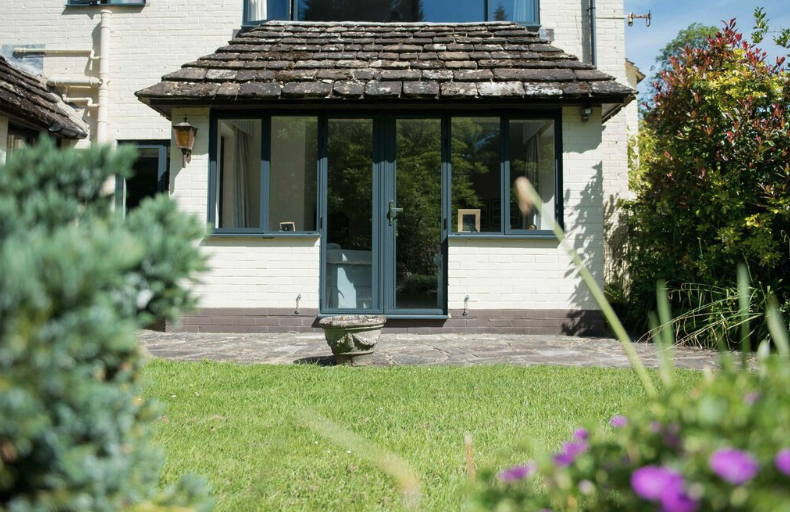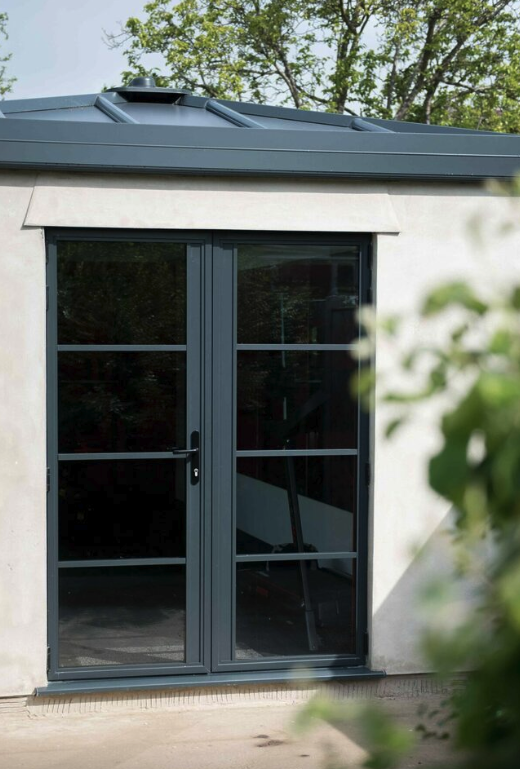Last Updated on 28th July 2023 by Jamie Scott
French doors are highly sought-after in the architecture and interior design fields, widely utilised for their aesthetic appeal. They are typically crafted from materials like timber, uPVC, or aluminium, and consist of two main doors that open from the centre, either swinging inwards or outwards. French doors are renowned for their visually pleasing design and often showcase decorative elements such as transoms (vertical bars dividing the glass panes) or ornate patterns etched onto the glass itself.
These doors are ideal for those seeking a sense of openness and a smooth transition between indoor and outdoor spaces. They have gained immense popularity in both residential and commercial settings, as they instantly enhance the overall beauty of any room. If you’re in search of flawlessly engineered and exquisitely designed French doors that operate with ease, we highly recommend taking a look at our Solidor Milano Timber Composite French Doors.
Why are French Doors called French Doors?
The term “French door” has its roots in 17th-century France, during the period of the French Renaissance and Baroque when these doors gained significant popularity. They were particularly favored in the opulent palaces and estates of that era. The name “French doors” emerged due to the French reputation for exquisite craftsmanship and artistic flair, which these doors embodied.
However, it’s important to note that French doors are not limited to France alone. The name primarily refers to the historical association of these doors with France and the enduring influence of French architectural design. French doors have transcended borders and have become a beloved door style worldwide, appreciated for their elegance and timeless appeal.

Why should you opt for French Doors?
With so many recent door design trends that have emerged over the last few years, here are the best reasons for why you should choose French doors for your home/ space.
- Aesthetic Appeal: With their graceful design, French doors add a captivating touch to any room. They seamlessly blend in with various architectural styles, becoming a focal point that enhances the overall aesthetics, whether you have a traditional or modern interior.
- Abundance of Natural Light: French doors are ideal for those seeking a brighter living environment. The generous glass panels allow natural light to flood into your space, creating a warm and inviting atmosphere that uplifts the ambiance.
- Seamless Indoor-Outdoor Transition: French doors excel in creating a smooth connection between indoor and outdoor spaces. By opening both doors, you can establish a wide and unobstructed passage, effortlessly merging your interior living areas with patios, gardens, or balconies. This feature is perfect for entertaining guests or simply enjoying picturesque outdoor views.
- Refreshing Ventilation: Good airflow and ventilation contribute to a comfortable living environment, and French doors facilitate excellent ventilation by allowing a gentle breeze to flow into your home. This natural airflow becomes particularly appealing during warmer months, infusing your space with a refreshing atmosphere.
- Versatility in Design: French doors effortlessly adapt to different settings and can complement any interior style, making them highly versatile. Whether your home exudes classic charm or contemporary flair, French doors can be customised to match your specific design preferences. With a range of finishes, materials, and decorative options available, you can create a personalised and enchanting entrance.
- Value and Resale Potential: Investing in French doors not only enhances your living space but can also increase the value of your home. Potential buyers are often drawn to the allure of French doors, recognising their functional advantages and aesthetic appeal. By incorporating French doors, you also have the potential to boost the resale value of your property.

Is there a standard size for French Doors?
The size of French doors can vary depending on the manufacturer and project requirements. While there is no fixed standard, there are commonly available sizes for both interior and exterior French doors.
Interior French doors typically have a standard width ranging from 24 inches to 36 inches (61cm to 91cm) per door panel. The height of interior French doors commonly ranges from 80 inches to 96 inches (203cm to 244cm).
Exterior French doors, designed for access to outdoor areas, tend to have larger dimensions. The standard width for exterior French doors usually starts at 60 inches (152cm) for a double door configuration. The door height follows a similar range as interior French doors, typically between 80 inches and 96 inches.
Here at Timber Composite Doors, we take pride in crafting bespoke doors tailored to your specific needs and home. We do not offer “off the shelf” or set sizes; instead, we provide made-to-measure solutions.
It’s important to note that these dimensions are general guidelines. It is recommended to consult with a professional or refer to the manufacturer’s specifications to ensure you select the appropriate size for your particular needs and space. Custom sizes can also be obtained to accommodate unique requirements or non-standard openings.
If you require assistance with sizing or have any questions, our team is here to help. Feel free to reach out to us for guidance and support!
How secure are French Doors?
French doors, like any other door type, require proper security measures to ensure their resistance to break-ins. However, when adequately secured, French doors can provide the same level of security as any other entry door. Here are some essential considerations regarding the security of French doors:
- Quality of Construction: Opt for high-quality French doors constructed from durable materials such as aluminium, composite, or uPVC. The strength and resilience of the materials contribute to the overall security of the doors.
- Locking Mechanisms: Choose robust and secure locking mechanisms for your French doors, such as deadbolts and multi-point locking systems. Ensure that the locks are properly installed and meet industry standards for maximum effectiveness.
- Glass Considerations: If your French doors feature large glass panels, consider using laminated glass. This type of glass is more resistant to impact and harder to break, enhancing the security of the doors.
- Security Enhancements: Supplement the security of your French doors with additional measures. Installing security bars or grilles on the interior can provide an extra layer of protection. Additionally, using security pins to prevent forced entry and implementing a security system with sensors and cameras can act as deterrents and alert you to any attempted break-ins.
- Regular Maintenance: Perform regular maintenance on your French doors to ensure they remain in good condition. Check for loose hinges, damaged frames, or weakened areas that may compromise the security. Address any issues promptly to maintain the integrity of the doors.
It is essential to remember that no security measure can guarantee absolute protection, as determined intruders may find ways to bypass even the most secure doors. However, by implementing appropriate security measures and maintaining overall vigilance in home security, you can significantly enhance the security of your French doors and your property as a whole.
FAQs about French Doors
Q: What distinguishes Double doors from French doors?
A: In reality, Double doors and French doors refer to the same type of doors. Different manufacturers may use varying terminology, and some specifiers may even refer to them as “patio doors” because they typically open onto a patio. However, within the industry, a “patio door” generally refers to a door that slides on a track.
Q: How do French doors differ from Patio doors?
A: The main difference between French doors and Patio doors lies in their method of opening. French doors are traditionally hinged double doors that open outward onto a garden space. On the other hand, patio doors slide along a track to one side. This design feature ensures that no gardening space is compromised by doors that swing outward.
Q: What defines a door as a French door?
A: French doors are characterized by their aesthetically crafted pairs of doors that can open inward or outward. They typically feature glass panes, allowing ample natural light to enter the room.
Q: Are patio doors less expensive than French doors?
A: When considering which door to choose, it’s essential to take all factors into account, not just the price alone. However, if comparing doors made from the same material, French doors generally tend to be less expensive. This is primarily due to the smaller amount of glass used compared to the large surface area of glass typically found in patio doors.